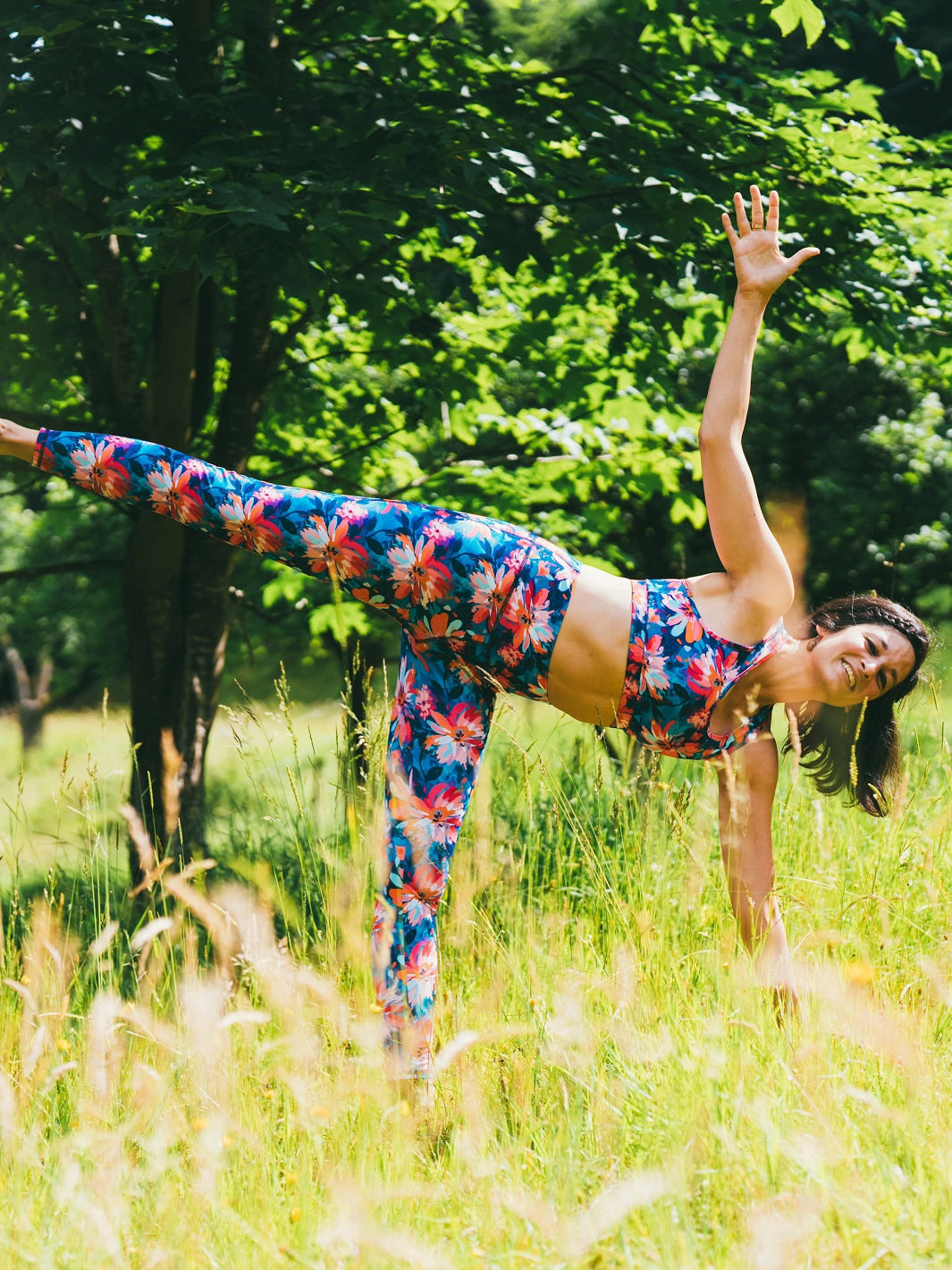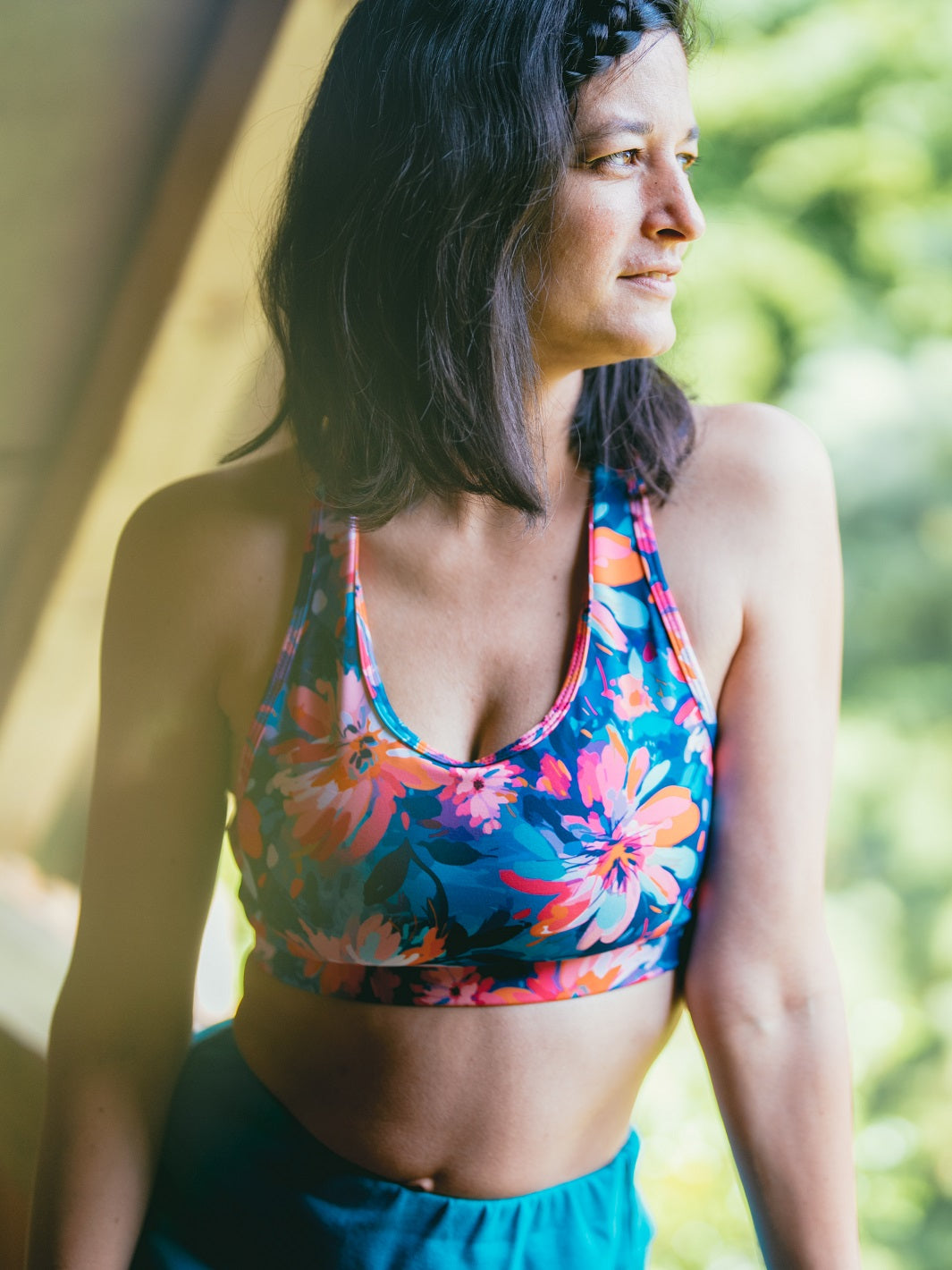This article is additional information regarding the yoga exercise proposed for the month of December (Introspection - I open my heart to let peace in) in our positive affirmations card game .
On a physiological level, heart-opening yoga postures stretch our rib cages backwards, exposing our vital organ and laying it bare.
A little bit as if we were placing our heart on a platter, as an offering.
Much more than a simple stretching, it is precisely towards this beautiful exercise of introspection that the postures of opening the heart seem to guide us.
To find out the 5 different categories of yoga postures, click here!
The offering of the heart or hridayaprasadasana is in this regard a primordial posture in the practice of Kashmir Yoga and which would have been transmitted to Jean Klein (French spiritual master who taught the philosophy of non-duality) by his Kashmiri master, the having himself learned from his master, etc.
Starting from the lotus posture (padmasana) where the right foot is placed on the left thigh and the left foot is placed on the right thigh, the hands placed on the ground slide towards the back of the pelvis. The head tilts back, the chin pointing towards the sky.

In the Kashmiri tradition, the offering of the heart would rid the yogi of human emotional heaviness by deploying the heart towards the sky and help them reconnect with their divine dimension.
Here is a great demonstration !
In Indian legend, the Gods decide one day to steal their divine essence from men, who have used it without consideration. After thinking for a long time about a good hiding place, the Gods opt to bury it in the hearts of men.
Men then begin to seek their divine essence in every corner of the Earth. But only a few manage to find it.
Feel love for yourself and others, access more compassion, forgive. This is what the opening of our heart chakra, called “Anahata” in Sanskrit, allows.
When we practice yoga on a daily basis, we gradually acquire increased attention to feelings and presence with ourselves, qualities which naturally help us to be more attentive, generous and empathetic towards others.
This beautiful attitude of openness of the heart is obviously to be carried with you outside of the yoga mat and can become a philosophy of life.
This amounts to putting into practice one of the foundations of yoga, “ahimsa” or non-violence: not judging, not causing harm, forgiving, helping or listening to others…
Despite all the good will in the world, opening one's heart can be an impossible ordeal for all those whose vital organ has gradually "closed" following painful events such as bereavement, suffering or abandonment.
Here are some of our favorite heart-opening yoga poses, for all hearts, whether they are grieving, locked, opening, or already wide open.
1. Upward Facing Dog or Adho Mukha Svanasana
You may be more familiar with its opposite, downward facing dog. Used in the typical Vinyasa Yoga sequence, upward facing dog offers a wonderful stretch of the back and opening of the heart.
The upward facing dog pose comes naturally after the plank pose. Resting on the toes and the palms of the hands aligned under the shoulders, the body forms a very straight line. Reverse the position of your feet by tilting the support of the toes towards the tops of the feet. Also maintain your support on your hands to evenly distribute the weight of the body. The head is straight, gaze forward.

2. The sphinx or Ardha-bhujangâsana
Start lying on your stomach with your feet pointed together or apart. Place your forearms and palms flat on the floor, with your hands on either side of your head. On an inhale, lift your rib cage, the forearms and palms of the hands remain on the ground to support the weight of the body. The elbows are in line with the shoulders.

3. The bow or Dhanurāsana
Position yourself lying flat on your stomach on the mat, arms at your sides. Bend your knees to bring your heels close to your glutes and on an inhale, grab your ankles with your hands. Arch your back as much as you can as long as the posture remains comfortable. Breathe slowly.

4. The Warrior I or Virabhadrasana I
In a standing position, the right knee is bent forward in line with the foot and the left leg is stretched back, foot perpendicular to the mat. Both arms are raised above the head and the hands are joined in prayer. The head lifts slightly and the gaze focuses on the ceiling.

5. The camel or Utrasana
It's the Arc pose but on the knees this time!
In a kneeling position, stretch your chest, shoulders and head back. Position your hands on your heels, maintaining your arch and relaxing your head.

6. Wheel pose or Urdhva Dhanurasana
Lie on your back. Bend your knees and bring your heels as close to your glutes as possible. Bend your elbows and place your palms flat on either side of your head, fingers pointing toward your shoulders. On an inhale, lift your butt off the ground, straighten your arms and push your tailbone as far as you can towards the sky. The feet remain parallel to each other.
For experienced yoginis, what a joy to stretch your big toe towards the sky. If this posture requires both a lot of strength and flexibility, it remains breathtakingly graceful.

And you, have you already found what type of yoga suits you?
Discover the personal development exercise proposed for the month of January: Cultivate the art of being positive!
Discover here our eco-responsible yoga outfits made in France from recycled materials, perfectly suited to practicing all types of yoga!
And to not miss any news from Géopélie, subscribe to our newsletter here at the bottom of the page 👇 we only send a maximum of two per month!
Photo credits :
- taylor-deas-melesh
- oksana-taran
- jermaine-ee
- chermiti-mohamed
Sources:
- The blog 3heure48minutes.com
- The beginner yoga blog
- The Yoga and Vedas blog
- Wikipedia Jean Klein
- Article Between modernity and tradition
- The Seasons of Yoga by Barbara Litzler






Leave a comment